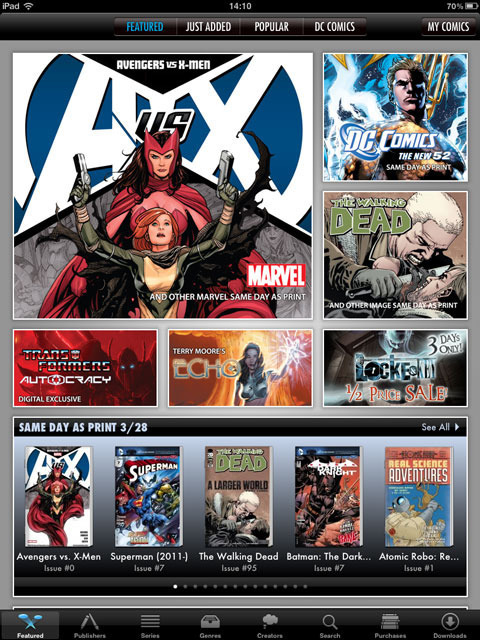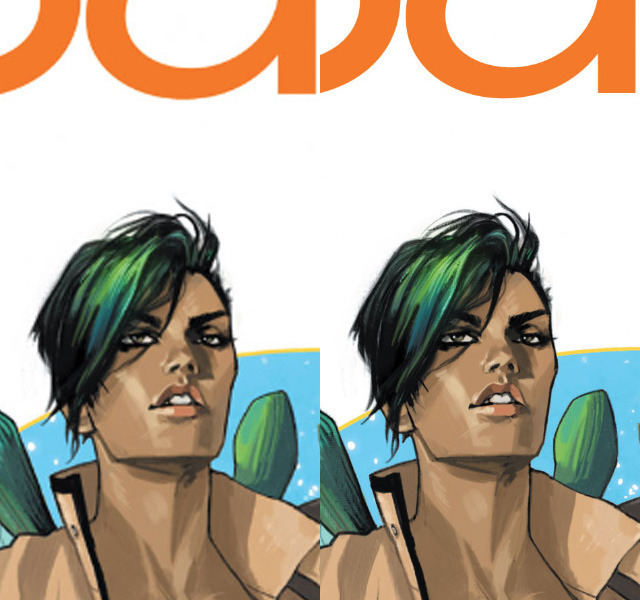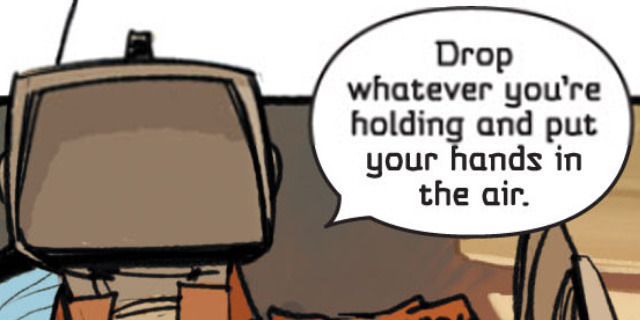Comics have been around for centuries, but the iconic Action Comics #1 featuring Superman in 1938 is widely considered to be the beginning of the “Golden Age.” Other metalliferous ages followed: silver, bronze, iron. Now, comics are in the “Modern Age.” And the biggest question both today and going forward—will comic books largely remain on glossy paper or transition to backlit LED?

Perhaps this question became more difficult in 2007, when comiXology launched as an online community for readers. In five years it has grown into the niche equivalent of iTunes. With more than 20,000 titles by dozens of publishers including Marvel and DC, Comics by comiXology has become the dominant platform for finding, buying, and reading comics on Web, tablet, or smartphone. The underlying technology is licensed, too. Branded apps from Marvel, DC, BOOM! Studios, IDW, and others use it and are linked. If you are reading comics on a tablet, you might as well be reading Comics.

Similar to iBooks, Comics (free) functions as store and reader. The Store is easy to navigate and search, much faster than rifling through bagged copies in storage boxes. Select a specific comic and the display shows a coverflow of the series, price, credits, summaries, and a few preview pages. There's even a link to buy in print directing users to local stores. Prices are comparable to print, usually from $0.99 to $2.99 for single issues. Comics also provides a decent “taste” of 500 free titles and counting. An increasing number of titles are also available the same day as print, eliminating another advantage of paper. Whatever benefits the physical medium holds, the new iPad threatens to take those away.
“Resolutionary” Comics
Saving shelf space is the obvious advantage of digital comics. A single issue takes up anywhere from 10 to 20MB. In terms of physical size, an iPad single page is slightly smaller diagonally than paper,—9.7 versus about 12 inches. It’s hard to imagine using a smaller tablet to read comics, or one of those Macrocephaly smartphones. Virtually all smartphones would be eliminated too were it not for Guided View.
This trademarked and controversial technology presents individual panels in sequence. It zooms in on each panel, or even multiple parts of a panel, optionally showing the entire page upon entering and exiting. While the benefit is obvious on the small screen of a smartphone, the risk is the destruction of the page as art. Does anyone think Michelangelo frescoing the Creation of Adam expected it to be experienced like this?
- Zoom out to Jehovah in fluttering red cape backed by Team Cherub flying to rescue Adam lost and nekid on a mountain.
- Zoom in to Jehovah’s face, eyes alight with the Knowledge of Good and Evil.
- Zoom in to Adam’s innocence.
- Zoom in to the outreached hands for the “ET” moment.
Guided View is, in my opinion, just awful. Favoring the parts over the sum of the page, it transforms the experience without the reader even realizing they are the worse for it.
ComiXology offers a technically better alternative called CMX-HD. That’s what the company dubbed the comic format for the new iPad, designed for a resolution of 2048x1536. Upgrading to the new format is painless, outside possible storage issues. A copy of Saga #1 (a double issue) took up 18 megabytes on an iPad 2, but it was 38MB for the new iPad. What do you get for double the size?

Glancing at these two images from an iPad 2 and a new iPad at the same resolution, you might not notice a difference. Look for a moment longer and you should. The new iPad is sharper in comparison, though in isolation at 1024x768 on an iPad 2 the difference is negligible even in the hated Guided View. There is, however, one important exception.

Typography in e-books isn't terribly important to publishers or readers, but it matters in comics. In the above example, Baron Robot XXIII “speaks” with a monospaced accent. That’s no accident. Every visual element matters in comics, a process broken down into stages beyond the story itself: penciling, coloring, inking, and lettering. Merging the above panel from an iPad 2 and new iPad, the difference is clear. On the new iPad, digital comics have superseded paper in one key aspect. It's a better read. Not that this matters.
Infinite Non-crisis: Digital Versus Analog
No matter how many new iPads Apple sells, there are other tablets (including ones from Apple for this year at least) running at a lower resolution. More importantly, there will be many, many more smartphones with physically smaller displays. Despite the new iPad obviating the need for assisted reading due to fuzzy text, the future of the digital comic is guided (ugh). Even if it is optional, how long before artists painstakingly guiding the eye by panel layout opt to let software do the work? How long before someone decides to add voices and sound effects? You have to wonder what this kind of transformative tech means... so I sought out a subject matter expert.

Ultimate Comics is, bar none, the best comics store near me that doesn’t smell like Cheetos. I mentioned in passing to CEO Jeremy Tarney the first title I ever read, Incredible Hulk #189 from July, 1975. With savant-like ease, he instantly knew he had it (now I do, too). This is an area where digital comics currently fail. There's a lack of back catalogs beyond a few, likely high-profit, titles. After buying my comic touchstone, Tarney took a few minutes to speak with me about digital comics, but first the obvious question:
Do you remember your first comic? "Uncanny X-Men #181," Tarney said. "They fought some dragon. I remember flipping through the pages at the drug store."
I asked about the impact of tablets on the business, whether there’s been either a halo or perhaps pitchfork effect on paper sales due to digital comics.
"The impact of iPad has been minimal at most," Tarney said. "It’s been positive because they’ve been able to read things they might not have picked up because there’s been a free preview… The fact of the matter is most people who are our customers are—not necessarily hardcore—but they’ve been reading comics for a while. They collect comics. They like the physical, actual comic book."
No, I did not ask what, exactly, “hardcore” readers were like. It's a scary thought no matter the interpretation and not salient to the future of paper comics. To that end, I did query whether paper comics including codes for digital versions had influenced buyers.
"It really doesn’t seem like most people care that much. When they first started doing it they made a big deal about it," Tarney said. "They bagged the issues so you couldn’t get the code out without buying the comic… people didn’t like it… you couldn’t flip through to see if you liked the artwork before buying."
Tarney wasn’t worried about the future of paper comics. To him and his customers, it’s about the “physical,” the visceral connection between reader and paper in hand. Digital cannot emulate it. Unlike music, the digital reader remains the outlier. It would appear for the casual comic reader, enjoying Hulk battling Mole Men and self-esteem issues on a tablet is a good enough experience. For for the sake of the art form, it appears thankfully not.
reader comments
82